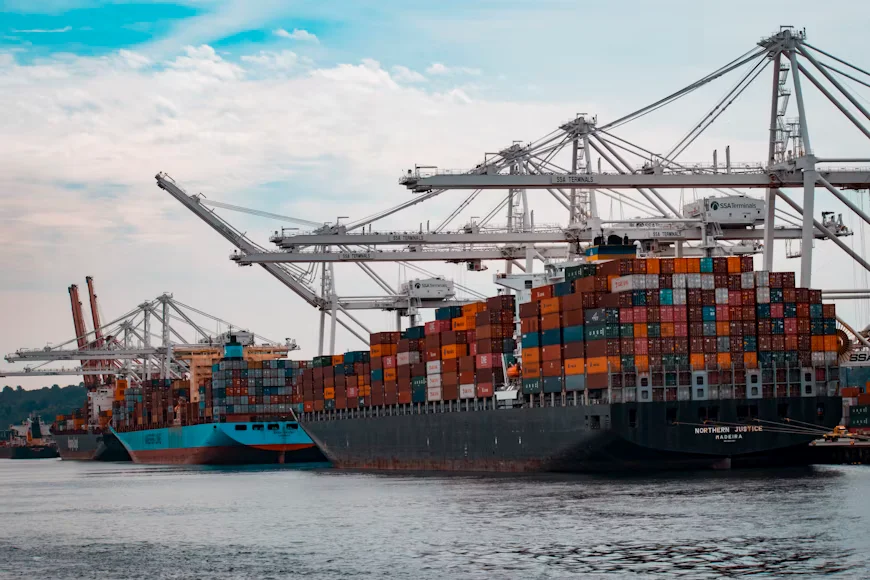Long-distance shipping expenses have developed increasing complexity as supply chains encounter extraordinary challenges. Understanding fundamental freight pricing determinants helps organizations make informed logistics strategy and budget planning decisions.
Modern shipping environments involve numerous variables directly influencing transportation costs, from fundamental operational expenses to unique handling requirements. Here are the key cost drivers in long-distance shipping.
Keep the momentum going—this one adds another layer.
Item Type and Cargo Complexity
The characteristics of your cargo directly influence transportation expenses. Standard palletized merchandise generally receives lower pricing than oversized, delicate, or dangerous materials.
Weight distribution, measurements, and special handling needs all contribute to rate calculations. Heavy, compact products optimise trailer utilisation and minimise per-unit expenses, while irregularly shaped or exceptionally light freight creates inefficiencies that carriers transfer to shippers.
Climate-controlled transport generates substantial additional costs through special equipment and energy usage. Perishable products demand accelerated processing and redundant systems, raising both immediate expenses and risk charges. Dangerous goods require certified operators, specialized paperwork, and adherence to stringent regulatory standards that increase shipping costs.
Trailer Choice and Equipment Specifications
Equipment choice affects shipping expenses and service alternatives. Standard dry van trailers provide the most economical rates for suitable freight. The accessibility of unique equipment differs by location and season. This generates additional cost fluctuation.
For intricate freight types needing special handling, equipment expenses can increase rapidly. Marine cargo, for example, frequently demands specialized transport coordination from ports to ultimate destinations. Partnering with a boat shipping company that comprehends both maritime logistics and inland transportation needs helps optimize equipment selections and decrease total shipping costs through effective coordination.
Trailer usage efficiency also impacts expenses, as carriers aim to maximize payload capacity while maintaining weight distribution compliance. Underutilized trailers raise per-unit expenses, while overweight shipments encounter penalties and routing limitations that introduce cost and complexity.
Distance and Route Efficiency
Distance continues to be a fundamental cost factor, yet the correlation between mileage and pricing isn’t consistently proportional. Primary freight corridors connecting established commercial centers provide superior per-mile rates compared to isolated or infrequently used pathways.
Transportation companies structure their operations around high-traffic routes. This generates cost efficiencies that help shippers transporting merchandise between major urban centers.
Geographical obstacles such as elevated terrain, toll facilities, and access-limited roads introduce complications and additional expenses. Remote area deliveries generally incur higher per-mile charges due to fewer carrier alternatives and diminished return load prospects.
The presence of reverse cargo substantially affects rate structures, as transportation providers favor routes offering profitable shipments in both directions.
Fuel Price Volatility
Fuel expenses constitute one of the most substantial and volatile costs in long-distance transportation. Most carriers apply fuel adjustments that vary with diesel pricing. This generates fluctuating expenses that affect shipping finances. These adjustments are computed as a percentage of the baseline rate and change weekly or monthly according to national fuel price benchmarks.
Escalating fuel prices impact not only immediate transportation costs but also shape driver practices and route planning. Carriers allocate considerable resources to fuel-efficient machinery and routing technology to reduce consumption, yet these investments eventually influence customer rates. Electric and alternative fuel systems demonstrate potential for decreasing fuel reliance, though broad implementation remains constrained in long-distance operations.
Labor Shortages and Driver Availability
The transportation industry experiences ongoing driver shortages that directly affect shipping expenses and service capacity. Skilled commercial operators earn elevated compensation, and carriers frequently struggle to sustain sufficient workforce levels for reliable service. This deficit generates upward rate pressure as carriers compete for qualified drivers and transfer increased personnel costs to clients.
Driver duty-time regulations add complexity to capacity management, as required rest intervals extend delivery timeframes and decrease equipment productivity. These regulations, though essential for safety, raise operational expenses by necessitating additional drivers and vehicles to preserve service standards.
The shortage particularly impacts specialized hauling services, where seasoned operators with specific credentials earn premium compensation.
Insurance Coverage and Risk Management
Insurance requirements and risk evaluation influence shipping expenses, particularly regarding high-value or specialized cargo. Standard freight insurance provides basic liability coverage, though valuable or delicate items require supplementary protection, increasing comprehensive shipping costs. Cargo declared value, transportation methodology, and destination collectively determine insurance premiums.
Risk elements, including theft probability, weather vulnerability, and handling specifications affect insurance expenses requiring special precautions increasing transportation costs.
Carriers modify base rates according to historical loss experience regarding specific commodity classifications or shipping routes. Appropriate packaging, documentation, and security measures potentially reduce insurance expenses while safeguarding valuable shipments.
Endnote
Though certain factors including fuel prices remain predominantly beyond individual influence, others present optimization opportunities through methodical planning, equipment selection, and carrier relationships. Collaborating with experienced logistics partners understanding these complexities helps organizations navigate challenging long-distance shipping environments while effectively managing expenses.
Hungry for more knowledge? Our full library is open to explore!







